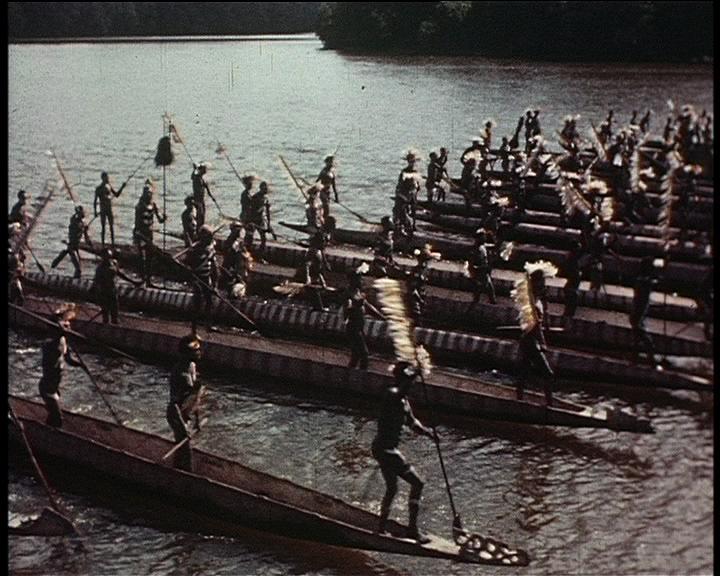

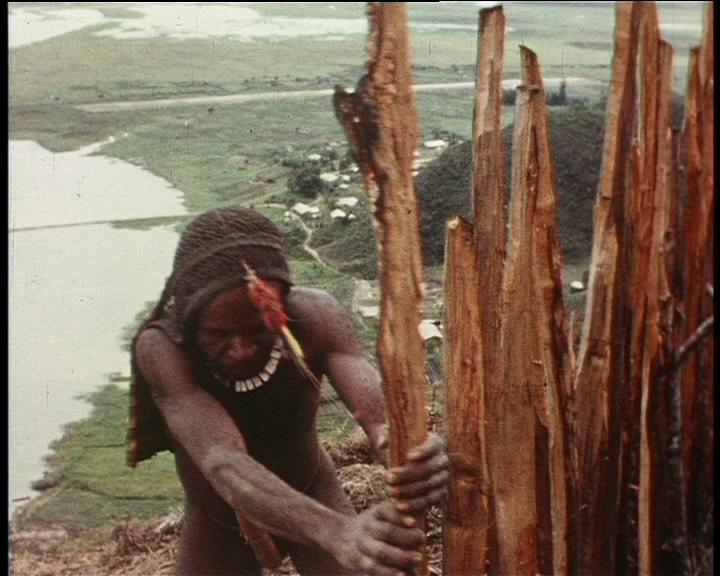

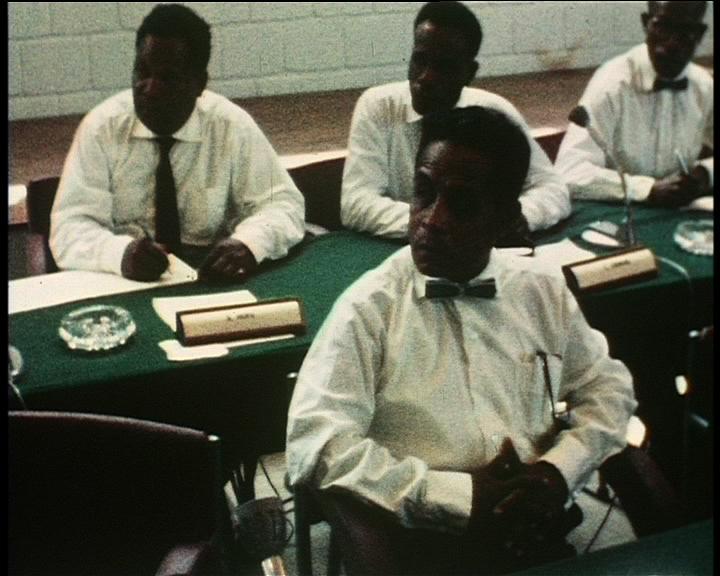

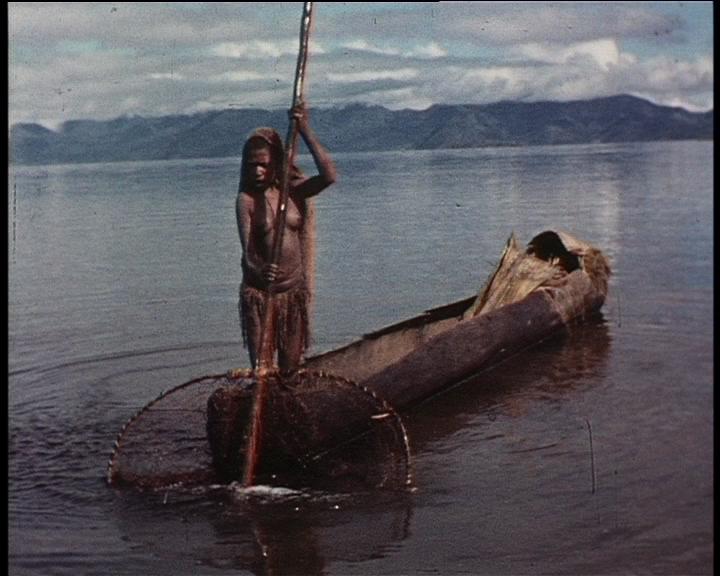

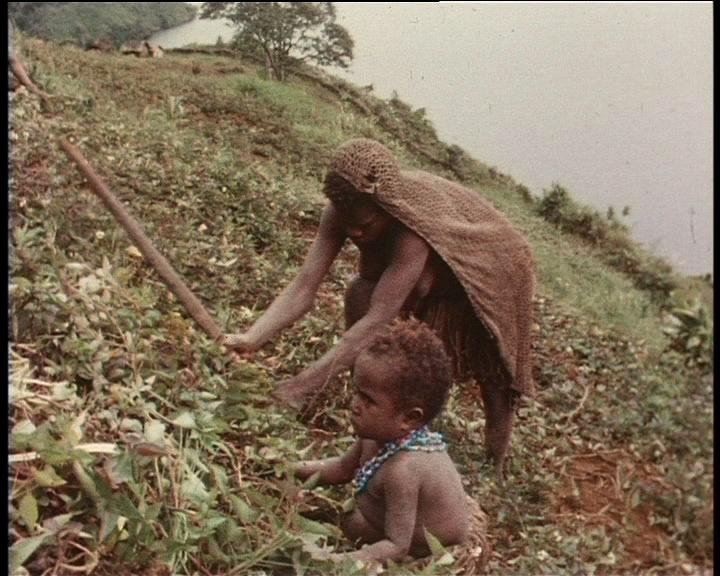



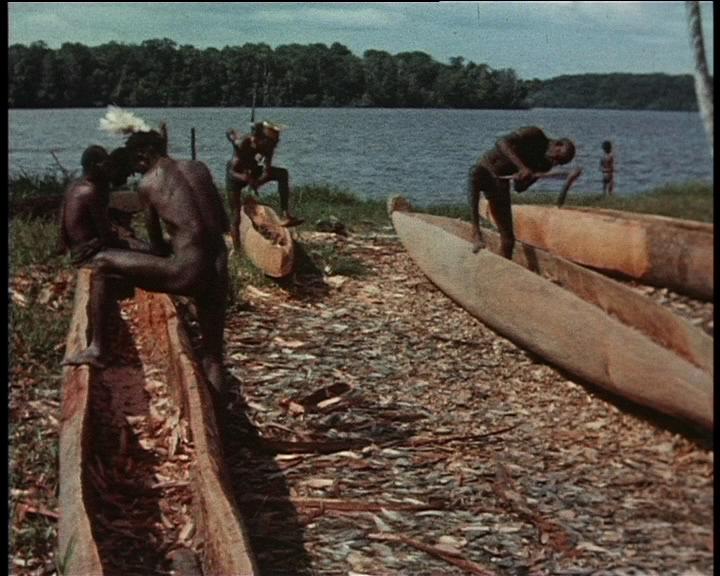

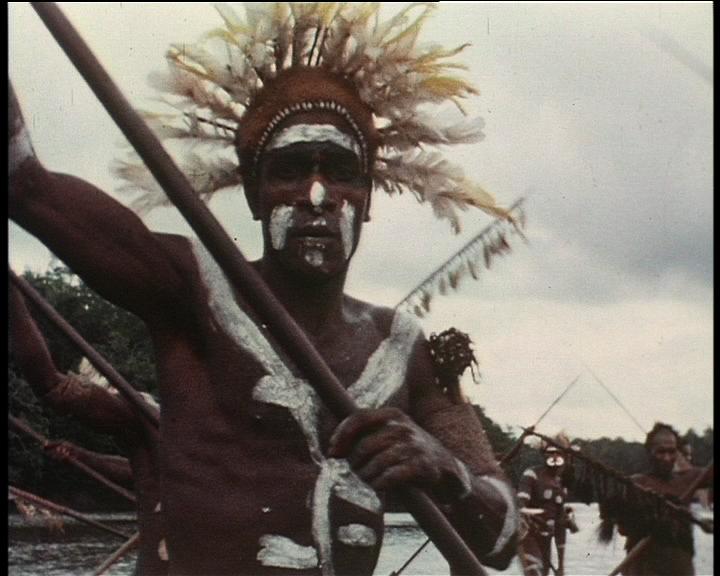

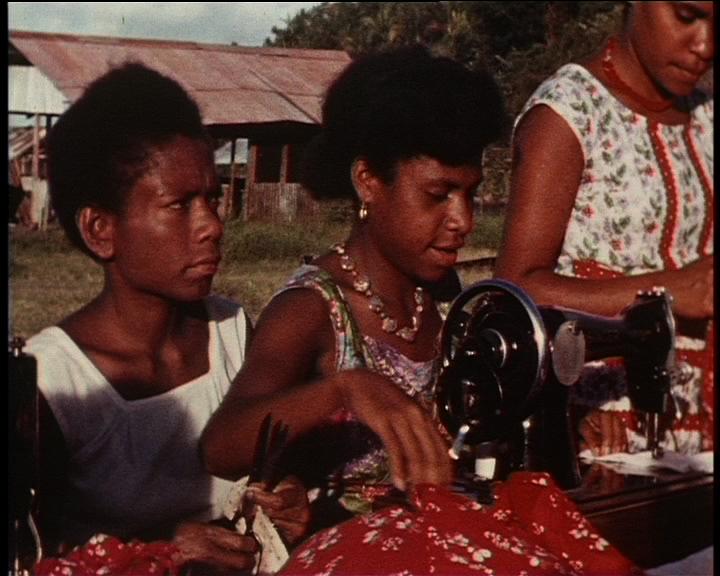

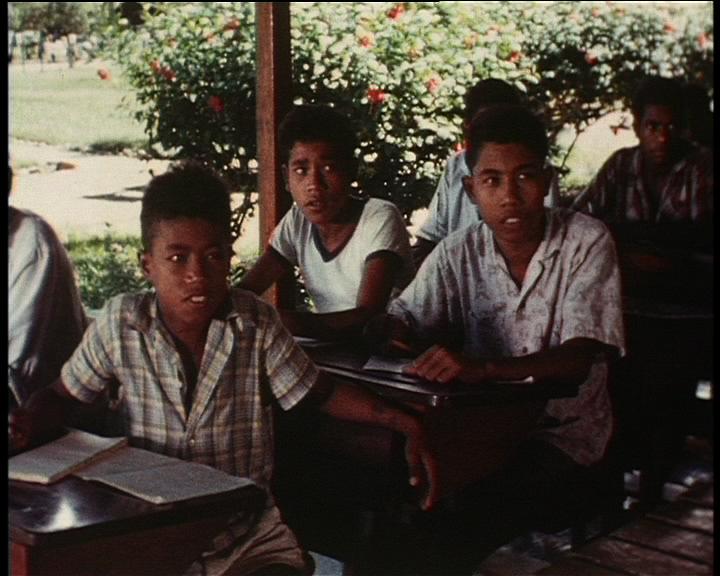

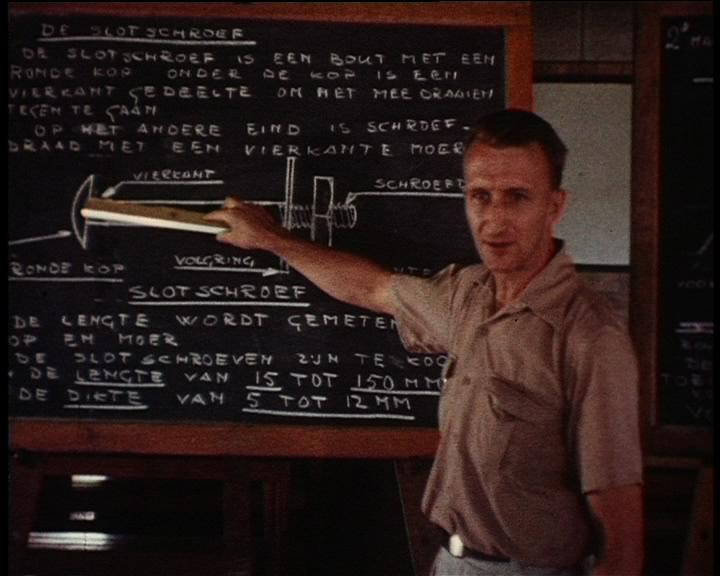

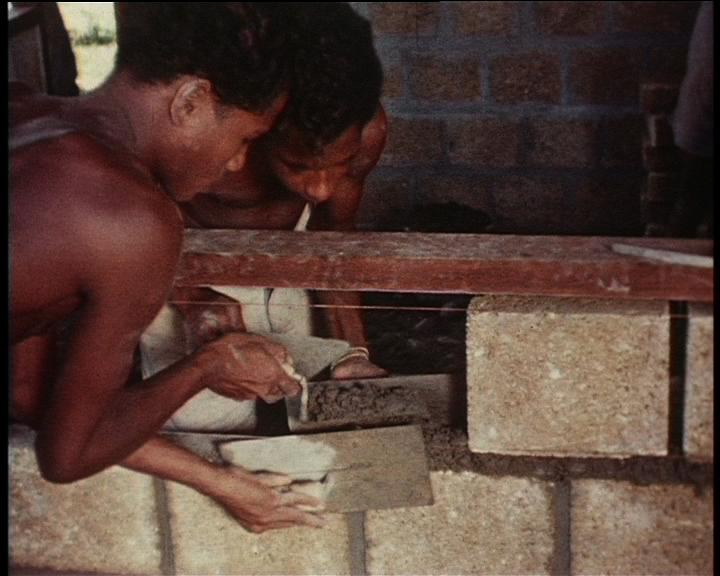

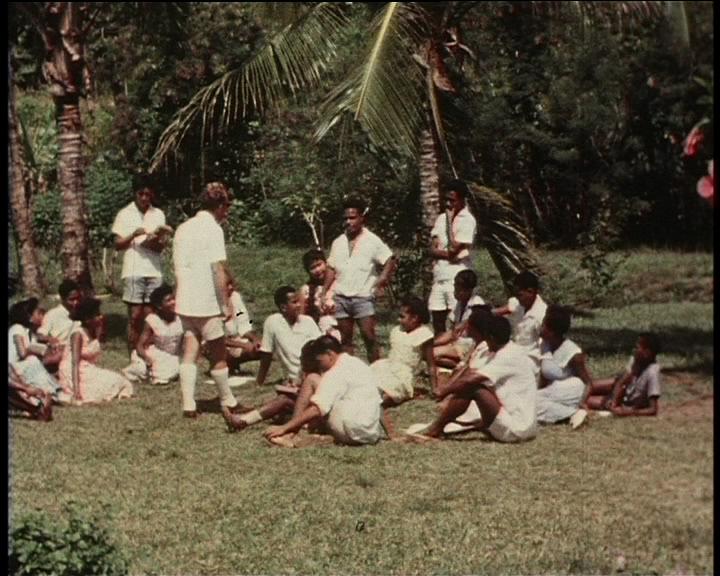



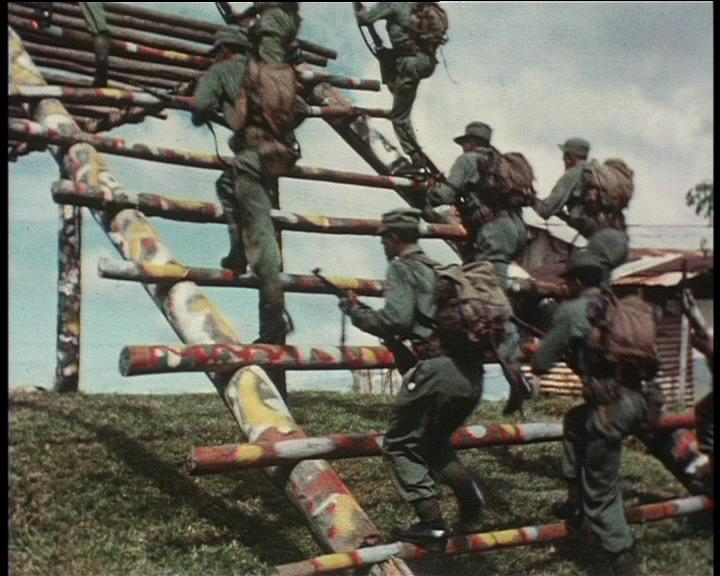

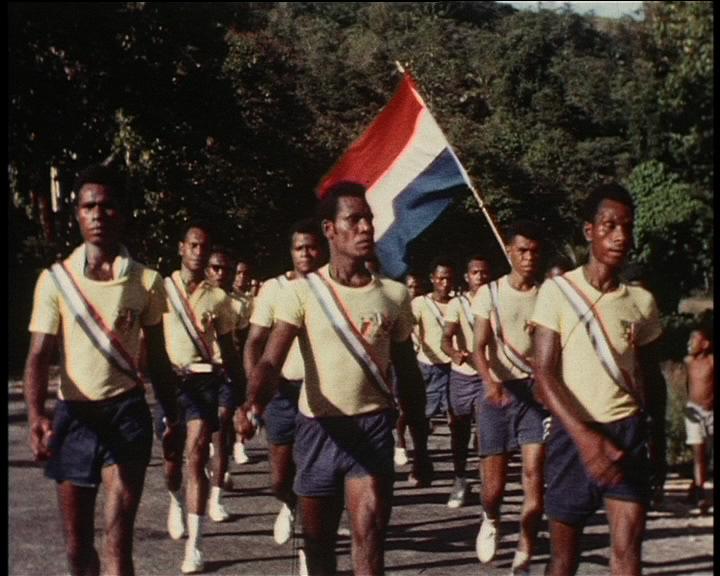

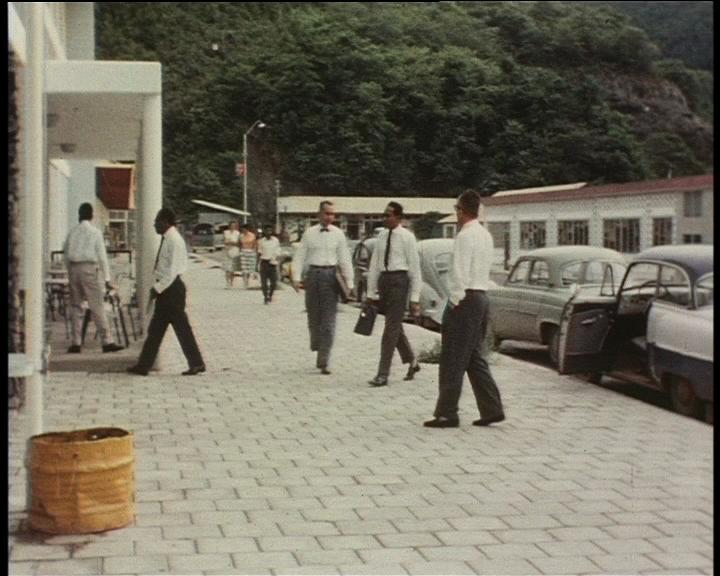

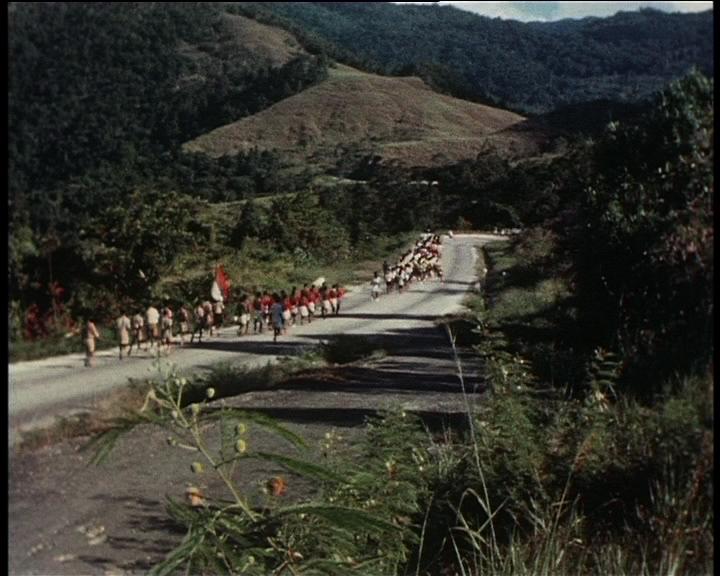

Van het stenen tijdperk naar het atoomtijdperk
From Stone Age to Atom Age
Objectcode
FI/1200/29
Educational film about the habits and conditions in which the Papuans live in the beginning of the 1960s. Items are politics and elections, The New Guinea Council, education, customs, daily life and physical condition of the country.
Contents
Description (source: www.beeldengeluid.nl): Part 1: 00.00 NET, National Educational Television, presents SHOTS: introductory shots of painted Asmat people in long war dugouts, running with spears and bow and arrows, running along the beach. Of Papuan families in little boats, air- and ground pictures of villages with pile-dwellings along the coast, women fishing with dip-nets from dugouts, tuber gardens protected against animals by means of a palisade. Building of houses, families sailing through swamp. 'Civilised' families sitting on the ground kneading bowls with sago. Harvest feast, Session of the New Guinea Council, where delegate Marcus Kaisiepo addresses Papuan members in Indonesian, in the meantime film title is being projected on to the image. Dutch interpreter translates speech into Dutch on behalf of Dutch councillors. 05.17 Geographical position and grouping of the whole of New Guinea with maps followed with air pictures of the dense mountainous jungle touching the coastline, headlands, creeks, estuaries and villages in the valleys behind the mountain ridges. Wooded marshland and swarms of white marsh birds skimming over the water. At Danau Paniai woman fishing from a dugout with dip net. Woman rooting up the soil on a mountainside. Her little son collects the dug yams. Market, where fish, red peppers and other foodstuffs are for sale. 05.59 Annual fair in Sentani where visitors, Dutchmen amongst them, looking on how Papuans are offering native souvenirs such as flutes, shields, cloth, stand with arrows and paddle. Making and finishing wood carving, sometimes with representation of ancestors. Naked man of the martial Asmat tribe making dugouts of hollowed out tree trunks. Dugouts with carved wooden figureheads being rowed by painted Asmat people accompanied by rowing songs. Solo dance of women, changing into mass dance by men and women, painted and with head-dress, accompanied by drummers under shelter. Harvest dance by Marind tribe in South New Guinea. 16.33 Mimikan family sails in little dugout in which burning fire is kept, on the river, cuts sago palm ashore, the content of which is cut up to pulp, which will be washed out with river water on the bank to be strained. In team-work building of a dam to create a fishing domain on the edge of a mangrove forest. Afterwards fish will be caught with big round nets. Fishing with fishing-lines heavy with stones, fishing with spear. Making fire with a piece of rope by a pygmy family in the interior, who afterwards take a meal of roasted yams. 24.10 Meeting of regional Biak Council, presided by Dutchman speaking fluent Malayan. Staking out of a plot of cultivable land in the jungle by Papuan surveyors, after which caterpillar-tractor knocks down and shoves away all the wood. The people cleaning the ground of stone chunks and bringing prefab roof parts. Papuans operating machinery of a cement-mill. Digging of an underpass for a culvert under a road through the jungle. 27.15 Building of a multifunctional community building for the Marind tribe in South New Guinea, the floor of which is made from lumps of mud. Village boys are playing in the mud of a river in the north of the country. Yearly this mud increases many centimetres. 28.23 END. Part 2 00.00 Lesson in doing sums in a classroom of a Primary School. Pupils in a classroom for secondary education. 00.51 Infant welfare in a native health centre, where mothers collect prescriptions and receive instructions about baby care. 01.39 Village of pile-dwellings built on muddy river bank, where children are walking over paths of poles between the houses, where outriggers are moored, and a woman is looking at her 'garden', which is a plant in a drum. 03.00 Churches - protestant and catholic - and interior of a mosque where a divine service is going on. 04.11 Session of New Guinea Council where delegate unfolds economical plan for the culture of export products in Indonesian. 04.52 Pile-dwellings on Danau Paniai, where skulls are part of the interior and are being used as a pillow for a sleeping man. Field is being tilled with cultivator, caterpillar-tractor drawn. Bustle on the yard of a saw-mill, where ironwood-trunks and loads of cut wood are being handled for export. Ship-yard 'Van Konijnenburg' at Manokwari, where Papuans are being trained in maintenance work during repairs, they also operate machinery in the engineering works. 07.52 Home industry in the shape of plaiting of baskets and the manufacturing of cane furniture. Training of women, making clothes on sewing machines, others training to bathe a baby-doll and others still who are making sago cakes. 10.20 Big community meal, prepared by turns by the families to be given to other families for rendering services. Similar meal consisting of roasted pig, corn, fruits and vegetables with the Marind tribe during a thanks feast. 13.31 Session of the New Guinea Council, where Dutch interpreter in glass box translates the delegate's speech in Indonesian into Dutch on behalf of the Dutch members. 14.18 School children during break having a foot-race match. Theoretical technical education in Dutch to young Papuans on one of the six technical schools, after which they can practice the theory as a fitter, carpenter and bricklayer. Discussion on independence in a group of educated men and women. Joint Dutch-Australian Nautical College in Hollandia, where boys from both territories receive training in English for coastal navigation. Police training college, where recruits are drilling, doing the assault course, and being instructed on traffic regulation. Policeman works a stop sign on a crossing. 18.03 Kiosk in bookshop, plastered with wood-carvings, concerning ancestors, where visitors are handing over banknotes to a clerk. Training of laboratory assistants how to cope with microscopes. Male nurse takes X-ray of male patient. Operation team consisting of Dutch surgeons and theatre nurse and Papuan assistants. 18.58 Harvesting of tropical agricultural products such as: coconuts, coffee, cocoa, passion-fruits and nuts: the farmers-to-be are receiving instruction by Dutchman in Malayan and they have to take care of spraying and ploughing. Pilot-farm, where Papuan cowboy is rounding up Brahma cows imported from Java into enclosure and a Papuan assistant shrinks back from a cow that attacked him after calving. 21.38 The official Papuan orchestra plays popular South See melody on wind instruments made from bamboo. 23.05 Football match between Papuan members of the New Guinea Council and Dutch civil servants, attending by a mixed attendance Discussion about future form of government between Dutchman and Papua, who puts a question in Malayan and receives an answer in English, whilst another young man listens. Illustrative images about a district of a town on the coast, a pile-dwelling and lecture on architecture in the open air using a scale model. 25.03 Discussion about the future course of New Guinea led by Raphael den Haan and held on the terrace of the family of delegate Nicolaas Jouwe (sitting on the wall and in close up). Young man (see previous heading) says to be responsible for the future of his land as a student. He thinks that independence can be realized in ten years' time, for which he asks help from the Netherlands. Illustrative intermediate shot of walking party. Of the arrival of members at the building of the New Guinea Council as well as walking parties. 27.27 End leader with projection of credit titles. 28.23 The End.
Title
From Stone Age to Atom Age
Year
1962
Technical detail
Film type
Information film
Dating
1-1-1962
Color
Spoken comment
English
Thesaurus terms
Cultural
Cultural origin » Papua
Geographic
Geographical term » Papua » Division Hollandia » Subdivision Hollandia » Hollandia
Geographical term » Papua » Division Central New-Guinea » Subdivision Paniai » Paniai
Geographical term » Papua » Division West New Guinea » Subdivision Manokwari » Manokwari
References
Links
http://www.beeldengeluid.nl
Copyrighthouder(s)
onbekend